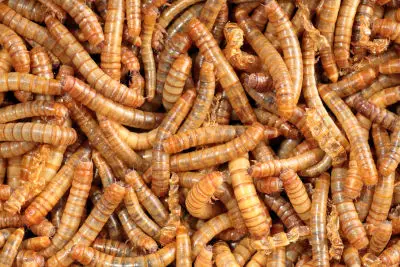How to Keep Lizards Warm at Night: Tips and Tricks
Lizards are cold-blooded creatures that rely on external sources to regulate their body temperature. In the wild, they bask in the sun during the day to warm up and retreat to cooler areas at night to avoid overheating. However, for pet lizards, it’s essential to provide a suitable environment that mimics their natural habitat. One of the critical aspects of caring for pet lizards is ensuring they stay warm at night.
There are several ways to keep lizards warm at night, depending on the species and their specific needs. One of the most effective ways is to provide a heat source such as a heat lamp or ceramic heater. These devices emit infrared heat, which warms up the air and surfaces in the enclosure. Another option is to use a heating pad placed under one side of the enclosure to create a temperature gradient, allowing the lizard to regulate its body temperature by moving to warmer or cooler areas. It’s important to monitor the temperature regularly to ensure it stays within the optimal range for the species.
| Are these foods dangerous for your Beardie? | |
| Avacado? Click here to learn, from this guide, if this food is dangerous |  |
| Superworms? Click here to learn, from this guide, if this food is dangerous |  |
Understanding Lizard Biology
Lizards are cold-blooded animals that rely on external sources of heat to regulate their body temperature. They are ectothermic, which means that their body temperature is determined by the temperature of their environment. Lizards are most active during the day when the sun is shining and the temperature is warm. At night, when the temperature drops, they become less active and seek shelter to keep warm.
Lizards have a unique way of regulating their body temperature. They bask in the sun to warm up and move into the shade or burrow underground to cool down. They also have specialized cells in their skin that allow them to absorb heat from their environment. These cells are called melanophores and are responsible for the color of a lizard’s skin. When a lizard is cold, its skin is darker to absorb more heat, and when it’s warm, its skin is lighter to reflect heat.
During the night, lizards need to find a warm place to sleep to avoid becoming too cold. In the wild, they may burrow underground or find shelter in rocks or crevices. In captivity, it’s essential to provide a warm and comfortable environment for your pet lizard. This can be achieved by using a heat lamp or a heating pad.
It’s important to note that not all lizards have the same temperature requirements. Some require higher temperatures than others, and some may become stressed if the temperature is too high or too low. It’s essential to research the specific needs of your lizard species to ensure that they are kept in a suitable environment.
In summary, lizards are cold-blooded animals that rely on external sources of heat to regulate their body temperature. They have a unique way of regulating their temperature and need a warm and comfortable environment to sleep at night. It’s important to research the specific needs of your lizard species to ensure that they are kept in a suitable environment.
Creating a Suitable Habitat
Keeping lizards warm at night requires creating a suitable habitat that mimics their natural environment. Here are some important factors to consider:
Choosing the Right Enclosure
Click here for the price, on Amazon #Ad
The enclosure should be large enough for the lizard to move around and have separate areas for basking, hiding and sleeping. It should also have proper ventilation and be escape-proof. Glass terrariums or plastic enclosures with mesh lids are good options.
Setting the Temperature
Lizards are cold-blooded animals, so they rely on external sources of heat to regulate their body temperature. The enclosure should have a temperature gradient, with a basking spot that is warmer than the rest of the enclosure. The ideal temperature range varies depending on the species of lizard, but generally, it should be between 80-90°F during the day and 70-75°F at night. A heat lamp or ceramic heater can be used to provide warmth.
It’s important to monitor the temperature regularly using a thermometer to ensure it stays within the appropriate range. Providing a suitable habitat will keep lizards warm and healthy, allowing them to thrive in captivity.
Maintaining Nighttime Warmth
When it comes to keeping lizards warm at night, it is crucial to maintain a consistent temperature in their enclosure. This can be achieved through a combination of different methods, including the use of heating lamps and thermometers.
Use of Heating Lamps
One effective way to keep lizards warm at night is by using a heating lamp. These lamps emit heat and light, which can help to simulate the warmth of the sun and keep the enclosure at a consistent temperature. It is important to choose the right type of heating lamp for your lizard, as different species have different temperature requirements.
When using a heating lamp, it is important to position it correctly in the enclosure. The lamp should be placed at one end of the enclosure, creating a temperature gradient that allows the lizard to move between warmer and cooler areas as needed. It is also important to monitor the temperature regularly using a thermometer.
Importance of Thermometers
Thermometers are an essential tool for keeping lizards warm at night. They allow you to monitor the temperature inside the enclosure and ensure that it remains within the appropriate range for your lizard’s species. It is important to use a reliable thermometer and to check it regularly to ensure that it is functioning correctly.
In addition to monitoring the temperature, it is also important to make adjustments as needed. If the temperature is too low, you may need to increase the wattage of the heating lamp or adjust its position. If the temperature is too high, you may need to decrease the wattage or move the lamp further away from the enclosure.
By using a combination of heating lamps and thermometers, you can ensure that your lizards stay warm and healthy throughout the night. It is important to monitor the temperature regularly and make adjustments as needed to maintain a consistent and comfortable environment for your pets.
Common Mistakes to Avoid
Overheating Risks
One of the most common mistakes that people make when trying to keep lizards warm at night is overheating their enclosures. While it’s important to provide a warm environment for your pet, it’s equally important to avoid overheating, which can be dangerous and even deadly for lizards.
To avoid overheating, make sure to use a thermometer to monitor the temperature inside the enclosure. The ideal temperature range for most lizards is between 75 and 85 degrees Fahrenheit. Anything above 90 degrees can be dangerous and can cause your lizard to become dehydrated.
Ignoring Natural Cycles
Another common mistake that people make is ignoring the natural cycles of their lizards. Many lizards are active during the day and sleep at night. If you’re trying to keep your lizard warm at night, it’s important to remember that they may not need as much heat as they do during the day.
To avoid this mistake, make sure to research your specific species of lizard and learn about their natural behaviors. This will help you provide the best possible care for your pet and ensure that they stay healthy and happy.
Overall, keeping lizards warm at night requires careful attention to detail and a good understanding of your pet’s needs. By avoiding common mistakes like overheating and ignoring natural cycles, you can provide a safe and comfortable environment for your lizard to thrive in.
